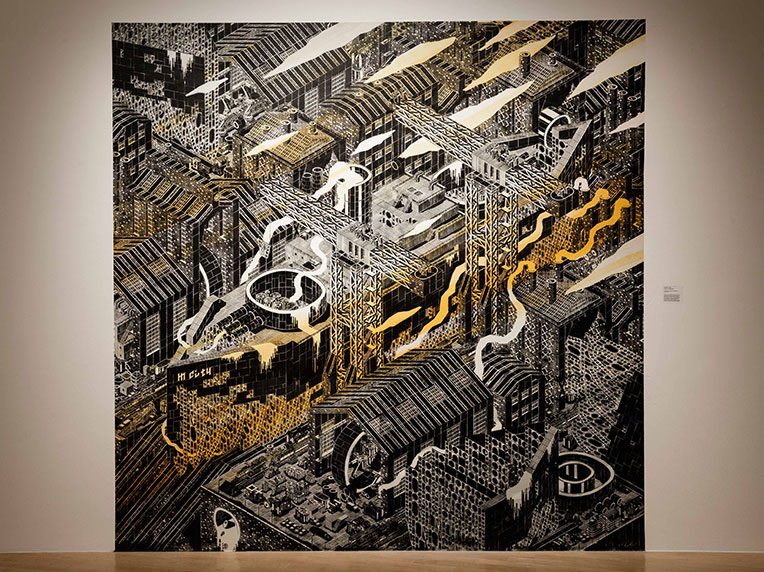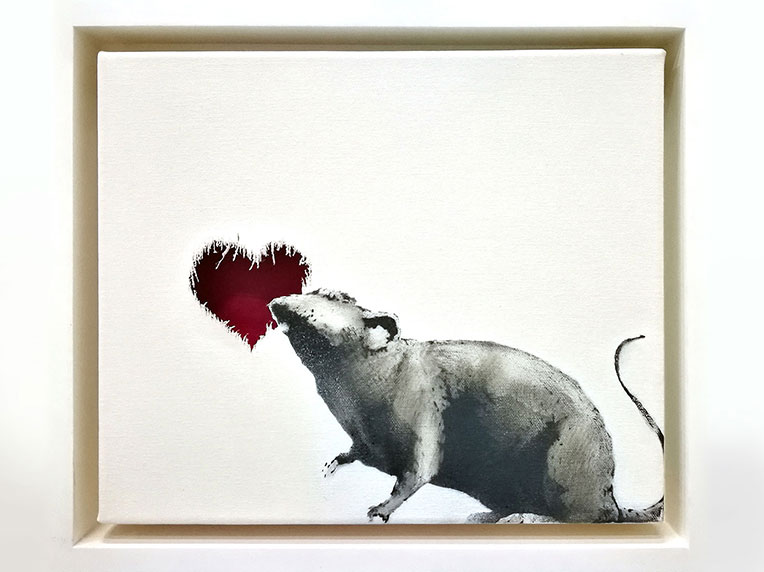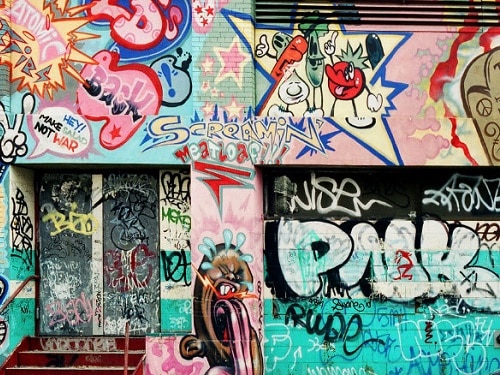Cut out of stiff material such as cardboard, the outline of a stencil can be used again and again to reproduce the same shape or word. A form of urban signature, the history of stenciling is reminiscent of the early origins of the tag.
As a technique stenciling existed separately from graffiti (and also did not began in New York) yet it channels just as much street energy. Throughout the world, stenciling is often associated with slogans or reproduced images on walls, most often in protest and for political purposes. Stenciled images are often humorous, poetic or intentionally shocking.
With many public bodies cracking down on graffiti, stenciling came to the forefront as it is much faster to use in the street. With the inevitable encounter between graffiti of the 1970s and 80s, and stencilers, a new chapter in Street Art emerged.

Created on site at the ArtScience Museum


Spray paint and emulsion on canvas
Courtesy of Vroom & Varossieau
Photo: courtesy of Stéphane Bisseuil
-764x572.jpg)
Sitting Kid and Butterflies, 2016
Stencil on cardboard
Courtesy of Magda Danysz Gallery


